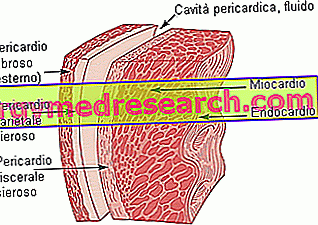
What is Flebogammadif?
Flebogammadif is a solution to be administered by infusion (drip into a vein). Flebogammadif contains the active substance human normal immunoglobulin.
What is Flebogammadif used for?
Flebogammadif is used in three main groups of patients:
- Patients at risk of infection because they do not have enough antibodies (proteins naturally present in the blood that help the body fight infections and other diseases). These patients may be congenital antibody deficiencies (primary immunodeficiency syndrome (PID)), as well as patients whose antibody deficiency is due to a blood cancer (chronic myeloma or lymphatic leukemia) or children born with the immunodeficiency syndrome acquired (AIDS) and subject to frequent infections. These conditions are called immunodeficiency syndromes and the indicated treatment is replacement therapy.
- Patients with certain immune system disorders. These patients have an anomaly of the immune system (the defense system of the human body) that must be resolved. These may be patients with idiopathic thrombocytopenic purpura (ITP) with an insufficient number of platelets (blood components that promote coagulation) and are at high risk of bleeding and of patients with certain diseases (Guillain-Barré syndrome, disease of Kawasaki). This type of treatment is called immunomodulation (immune regulation).
- Patients undergoing bone marrow transplantation.
The medicine can only be obtained with a prescription.
How is Flebogammadif used?
Flebogammadif is usually given as an intravenous infusion, usually by a doctor or nurse; the administration can also be carried out by the patient or his carer after having been properly instructed. The dose and frequency of infusions depend on the disease being treated. In replacement therapy it may be necessary to change the dose based on the patient's response. For complete information, see the summary of product characteristics included in the EPAR.
How does Flebogammadif work?
The active substance in Flebogammadif, human normal immunoglobulin, is a highly purified protein extracted from human plasma (a component of blood). It contains immunoglobulin G (IgG), a type of antibody, which has been used medicinally since the 1980s and has a broad spectrum of activity against infectious agents. Flebogammadif helps to restore abnormally low IgG levels in the blood to normal levels. At higher doses, Flebogammadif can help regulate an immune system affected by abnormalities and modulate the immune response. Flebogammadif is produced in a similar way to Flebogamma, another medicine containing normal human immunoglobulin, with the addition of some operations in the purification phase of the product obtained from human plasma.
How has Flebogammadif been studied?
Since human normal immunoglobulin has long been used for the treatment of these diseases, only two minor studies were needed to establish the efficacy and safety of Flebogammadif for patients. In the first study, Flebogammadif was used as a replacement therapy in 46 patients with PID, with administration at intervals of 21-28 days. The main measure of effectiveness was the number of serious bacterial infections within a year of treatment.
The second study examined the use of Flebogammadif for immunomodulation in 20 subjects with ITP. The main efficacy parameter was the maximum number of platelets obtained during the three months of the study.
In none of the two studies was Flebogammadif compared to other treatments.
What benefit has Flebogammadif shown during the studies?
In the first study, patients had on average 0.021 serious infections in one year. Since this value is lower than the default threshold of 1 infection per year, this indicates the effectiveness of the medicine in substitution treatment. In the second study, up to 14 patients out of 19 (73%) who continued participation in the study obtained platelet values greater than 50 million per milliliter at least once during the study, confirming the efficacy of Flebogammadif in immunomodulation.
What is the risk associated with Flebogammadif?
The most common side effects seen with Flebogammadif, ie observed in between 1 and 10 patients in 100, are headache, pyrexia (fever) and puncture site reactions (pain and inflammation). Some side effects are most likely to occur if the infusion occurs at high speed, in patients with low immunoglobulin levels or in patients treated with Flebogammadif for the first time or long after the last administration. For the full list of all side effects reported with Flebogammadif, see the Package Leaflet. Flebogammadif should not be used in people who may be allergic to normal human immunoglobulin or any other ingredient or to patients allergic to other types of immunoglobulins, particularly if they have immunoglobulin A (IgA) deficiency and have anti-IgA antibodies. Flebogammadif cannot be used in patients who are intolerant to fructose (a type of sugar). Particular precautions should be taken in infants and children as fructose intolerance may not yet have been diagnosed and could therefore be fatal.
Why has Flebogammadif been approved?
Under current guidelines, medicines that have been shown to be effective in patients with PID and in patients with ITP may also be authorized for the treatment of all types of primary immunodeficiency as well as cases of antibody deficiency due to blood cancer and of AIDS in children. They can also be authorized, without the need to carry out specific studies, for the treatment of patients with Guillain-Barré syndrome, patients with Kawasaki disease and patients about to undergo bone marrow transplantation.
Therefore the Committee for Medicinal Products for Human Use (CHMP) concluded that the benefits of Flebogammadif outweigh the risks associated with it for patients requiring IgG for replacement therapy, immunomodulation or bone marrow transplantation, and recommended release of the marketing authorization of the product.
More information on Flebogammadif:
On August 23, 2007, the European Commission issued a marketing authorization for Flebogammadif, valid throughout the European Union, to Instituto Grifols, SA.
The full EPAR for Flebogammadif can be found here.
Last update of this summary: 05-2008.



